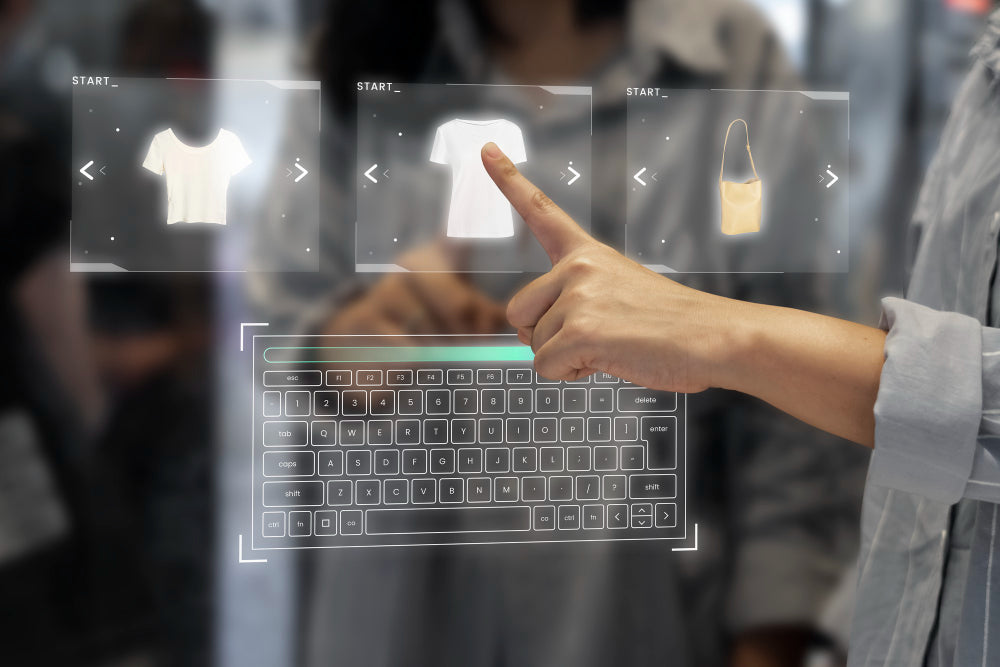Starting an ecommerce store might be straightforward, but driving substantial revenue requires more strategic action.
As an e-commerce entrepreneur, you're likely familiar with upselling and cross-selling strategies. If executed properly, these tactics significantly increase average order value and overall sales.
In fact, industry giant Amazon attributes approximately 35% of its revenue to these methods. Similarly, Temu, Shein, Etsy, etc., are all masters of suggestive selling through features like "People also bought" carousels and "Complete the look" pop-ups, which increase their sales.
- So, if you are also considering implementing these tactics, you are on the right track.. This post will help you with:
- Overview and difference between upselling and cross-selling
- Psychological triggers that drive each tactic
- Right time and value perception for upselling vs. cross-selling
- Practical strategies you can implement immediately Methods to A/B test and increase your average order values
Understanding and applying these strategies can create a more engaging shopping experience that increases revenue for ecommerce stores.
Difference Between Upselling and Cross-Selling
Before you start tinkering with product recommendations and pop-ups, you need to understand what’s actually happening behind the scenes because upselling and cross-selling are different strategies; you could completely miss the mark unless you know the difference.
Upselling is when you offer your customer a slightly better, often more expensive version of what they were already considering. For example, booking a hotel room and being offered a suite with a balcony for just $20 more.
Cross-selling, on the other hand, is when you suggest complementary products—not better, just additional. For example, a customer might buy a pair of sweatpants and be shown a matching t-shirt, sweatshirt, or hoodie.
Both these strategies tap into the same basic instinct: if someone’s already in buying mode, their mental doors are open. They’re more receptive to suggestions because they’ve committed to spending. You’re simply guiding them, gently, toward a complete purchase and, ideally, a higher cart value.
However, the subtle distinction is that upselling feels like an upgrade, while cross-selling feels like personalization. Both are about delivering value, but they serve different moments in the customer journey.

Psychological Triggers Behind Upsell and Cross-sell
This whole game is a psychological one.
Upselling works best when it hits the scarcity + perceived value combo. People want more for just a bit more; they like feeling smart and getting a better deal, even if they’re technically spending more. It's the "Oh, it’s just $15 extra for the premium version?" moment.
Framing is everything here. Anchoring the upgraded price against the basic version makes the higher-ticket item feel like a steal. It’s kind of like saying, “This one is just a little more, but look at everything extra you get!” That comparison makes the expensive item feel worth it.
Cross-selling leans more on the completeness heuristic, the internal nudge we all feel to round things out. We don’t want to leave a set incomplete or skip the suggested “extras” when purchasing something we care about. This is why adding a screen protector to your new phone feels necessary, even if you hadn’t planned on it.
There’s also trust in the system. When Amazon recommends something with “Frequently Bought Together,” it’s not a suggestion from a sales representative—it’s data-backed, which gives it authority. We trust that other people like us made similar choices, and that sense of social proof closes the deal faster than any sales pitch.
When to Upsell vs. When to Cross-Sell to Drive Revenue
Now, this is where things get delightfully strategic.
Upselling works best before checkout. You want to catch people while they’re still choosing, still comparing, still deciding where they land on the “good enough vs. treat yourself” spectrum.
This is your moment to show them the best, most expensive version of what they are looking for, the one with all the extra features.. But if you hit them too late, they’ll feel like you’re bait-and-switching.
Cross-selling, on the other hand, is your post-cart or even post-purchase friend. It’s the “while you’re here…” moment that feels thoughtful rather than intrusive.
Take the thank-you page, for instance, which says, “Want to add this travel hoodie to your order for 20% off?” Or the follow-up email saying, “We thought you might like this matching set.” It works because it feels helpful, not desperate.
Both strategies are about context. The golden rule is: Never interrupt the flow of a confident purchase. Always build on it. Know your product, know your customer’s mindset at each step, and offer them value that makes sense at that moment.
Easy Wins You Can Try Right Now
Start with your product pages. If someone’s looking at a $70 hoodie, show them the $85 version with premium fleece and a custom embroidery option. But not in a screaming pop-up, just a gentle comparison table or a "Most Loved Upgrade" badge.
Bundle recommendations are another low-hanging fruit. Create logical sets of products and offer a small discount for buying them together. Athleisure kits, weight loss sets, home office bundles, etc., such offers work because they take decision-making off the customer’s plate.
Another smart move is personalized recommendations based on browsing behavior or cart contents. For example, if someone adds running shoes, suggest moisture-wicking socks or a bottle of sneaker cleaner. Just keep it relevant and contextual.
Platforms like Shopify and WooCommerce offer AI tools that upsell based on browsing and purchase history. Consider cross-selling via subscription add-ons. If you sell subscriptions for skincare, supplements, etc., you can offer new products as part of the next renewal while also saving on marketing costs.
And if you’re using email marketing, you are already sitting on a gold mine. Abandoned cart emails, order confirmation follow-ups, and “Customers like you also loved…” campaigns can quietly work behind the scenes to nudge repeat revenue.
How to A/B Test for Bigger Average Order Values
The secret to doing all this without becoming a brand that feels like a digital used-car salesman is to test everything.
A/B testing isn’t just for headlines or button colors. You can (and should) test where you place upsell offers, how you phrase them, which products you bundle, and what kind of incentives you attach.
Sometimes, the smallest tweaks, like changing “Add this too” to “Complete your set,” can shift conversion rates in surprising ways.
Start with a hypothesis like “Maybe adding a premium product at the top of the page will make people spend more.” Then, test this idea side by side with your current layout so you can compare them. Give it time. Look at data like conversion rates, bounce rates, and average order value along with clicks.
But there’s an important rule: Don’t test too many things simultaneously.
One change at a time, or you won’t know what worked. Also, A/B testing isn’t just about what works. It’s about what doesn’t annoy. Sometimes, you’ll find out that people love bundles but hate being interrupted by pop-ups. Or they’ll upgrade willingly if the offer is subtle, but ignore it when it’s too flashy.
Let the Pros Handle It for Direct & Focused Results
Not sure which upselling or cross-selling strategy will work best for your product and store? At Web Ecommerce Pro, our team knows ecommerce inside out. We have in-house support, time, and resources to understand your business goals and craft solutions that skip the guesswork and drive real results.
Simply book a free consultation today, and let’s explore how we can drive revenue to your store.









